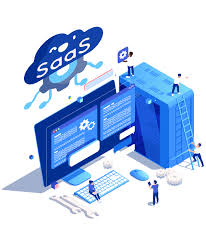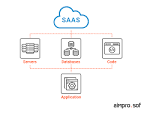Exploring the Role of a Google Embedded Software Engineer
The Role of a Google Embedded Software Engineer
Google, one of the tech giants in the industry, employs embedded software engineers to work on a variety of projects that involve creating and optimizing software for embedded systems. These engineers play a crucial role in developing cutting-edge products and technologies that power Google’s diverse range of services.
Responsibilities of an Embedded Software Engineer at Google
Embedded software engineers at Google are responsible for designing, developing, and testing software that runs on embedded systems such as microcontrollers, processors, and other hardware components. They collaborate with cross-functional teams to ensure that the software meets performance, reliability, and security standards.
Key responsibilities of a Google embedded software engineer include:
- Writing efficient and optimized code for embedded systems
- Debugging and troubleshooting software issues
- Collaborating with hardware engineers to integrate software with hardware components
- Ensuring software compliance with industry standards and best practices
- Participating in code reviews and contributing to continuous improvement initiatives
Skills Required for Success
To excel as a Google embedded software engineer, individuals need a strong foundation in computer science, programming languages like C/C++, and experience working with embedded systems. Additionally, key skills that are valued at Google include:
- Problem-solving abilities
- Critical thinking skills
- Attention to detail
- Effective communication skills
- Ability to work in a fast-paced environment
Career Growth Opportunities
A career as an embedded software engineer at Google offers exciting opportunities for professional growth and development. Engineers have the chance to work on innovative projects, collaborate with top talent in the industry, and contribute to products that impact millions of users worldwide.
With continuous learning opportunities, mentorship programs, and a supportive work culture, Google empowers its embedded software engineers to reach their full potential and make meaningful contributions to the field of technology.
Essential FAQs About Becoming an Embedded Software Engineer at Google
- What does an embedded software engineer at Google do?
- What qualifications are needed to become a Google embedded software engineer?
- What programming languages should I know for an embedded software engineering role at Google?
- How can I prepare for a Google embedded software engineer interview?
- What is the typical salary range for an embedded software engineer at Google?
- What kind of projects do embedded software engineers work on at Google?
- Is prior experience with embedded systems required to apply for this position at Google?
- How does the career progression look like for an embedded software engineer at Google?
- What is the work culture like for engineers working in Google’s hardware teams?
What does an embedded software engineer at Google do?
An embedded software engineer at Google plays a pivotal role in designing, developing, and optimizing software for embedded systems that power a diverse range of Google’s products and services. These engineers collaborate with cross-functional teams to ensure that the software meets stringent performance, reliability, and security standards. Their responsibilities include writing efficient code for embedded systems, debugging software issues, integrating software with hardware components, ensuring compliance with industry standards, and actively participating in code reviews to drive continuous improvement initiatives. Overall, a Google embedded software engineer contributes to creating cutting-edge technologies that impact millions of users worldwide.
What qualifications are needed to become a Google embedded software engineer?
To become a Google embedded software engineer, individuals typically need a strong educational background in computer science or a related field. A bachelor’s degree or higher is often required, along with proficiency in programming languages such as C/C++. Additionally, candidates should have experience working with embedded systems and a deep understanding of software development principles. Problem-solving skills, attention to detail, and the ability to work effectively in a team are also essential qualifications for aspiring Google embedded software engineers. Continuous learning and staying updated on the latest technologies are crucial for success in this dynamic and challenging role at Google.
What programming languages should I know for an embedded software engineering role at Google?
When considering a role as an embedded software engineer at Google, familiarity with programming languages such as C/C++ is essential. Proficiency in these languages is highly valued as they are commonly used in developing software for embedded systems. Additionally, having knowledge of assembly language and scripting languages like Python can be advantageous for certain projects. Google looks for candidates who have a strong foundation in programming and are adaptable to learning new languages and technologies as needed to excel in the dynamic field of embedded software engineering.
How can I prepare for a Google embedded software engineer interview?
To prepare for a Google embedded software engineer interview, it is essential to focus on mastering key technical concepts and problem-solving skills. Familiarize yourself with data structures, algorithms, and programming languages commonly used in embedded systems development, such as C/C++. Practice solving coding challenges and algorithmic problems to enhance your problem-solving abilities. Additionally, research Google’s engineering culture, values, and past projects to understand the company’s expectations. Be prepared to demonstrate your ability to work collaboratively in a team environment and communicate effectively about technical concepts. Engaging in mock interviews and seeking feedback from peers or mentors can also help you refine your interview skills and boost your confidence for the interview process.
What is the typical salary range for an embedded software engineer at Google?
The typical salary range for an embedded software engineer at Google can vary based on factors such as experience, location, and level within the company. Generally, entry-level embedded software engineers at Google can expect a competitive salary that ranges from around $100,000 to $130,000 per year. As engineers gain more experience and move up the ranks, their salaries can increase significantly, with senior-level embedded software engineers at Google earning upwards of $200,000 or more annually. Additionally, Google offers various benefits and perks to its employees, making it an attractive employer for those in the field of embedded software engineering.
What kind of projects do embedded software engineers work on at Google?
Embedded software engineers at Google work on a diverse range of projects that involve developing software for embedded systems to support various Google products and services. These projects can include optimizing code for hardware components, enhancing the performance of embedded systems, integrating software with cutting-edge technologies, and ensuring the reliability and security of embedded software. From working on innovative projects in autonomous vehicles to developing smart home devices, Google’s embedded software engineers have the opportunity to contribute to groundbreaking technologies that shape the future of the tech industry.
Is prior experience with embedded systems required to apply for this position at Google?
While prior experience with embedded systems is not always a strict requirement to apply for a position as a Google embedded software engineer, it is highly beneficial. Google values candidates who have a strong foundation in embedded systems, as it demonstrates their familiarity with the complexities of working on software for hardware-constrained devices. However, Google also considers candidates with relevant experience in related fields or those who show a keen interest in learning and adapting to the challenges of embedded software development. Ultimately, showcasing a combination of technical skills, problem-solving abilities, and a passion for innovation can greatly enhance an applicant’s chances of securing a role as an embedded software engineer at Google.
How does the career progression look like for an embedded software engineer at Google?
Career progression for an embedded software engineer at Google typically follows a structured path that allows individuals to advance their skills and responsibilities over time. Upon joining Google, embedded software engineers often start in entry-level positions where they gain hands-on experience working on projects and collaborating with cross-functional teams. As they demonstrate proficiency in designing and optimizing software for embedded systems, engineers may progress to more senior roles with increased leadership responsibilities. Career growth opportunities at Google for embedded software engineers include the chance to lead projects, mentor junior team members, and contribute to the development of cutting-edge technologies that shape the future of the company. Continuous learning and professional development initiatives support engineers in expanding their expertise and advancing their careers within Google’s dynamic and innovative environment.
What is the work culture like for engineers working in Google’s hardware teams?
The work culture for engineers working in Google’s hardware teams is known for its collaborative and innovative environment. Engineers at Google have the opportunity to work on cutting-edge projects, collaborate with top talent in the industry, and contribute to the development of groundbreaking technologies. The hardware teams at Google emphasize teamwork, creativity, and continuous learning, fostering a culture where employees are encouraged to think outside the box and push the boundaries of what is possible. With a focus on diversity, inclusion, and professional growth, Google provides its engineers with a supportive and dynamic work culture that values creativity, problem-solving skills, and a passion for technology.










